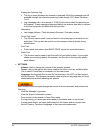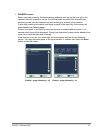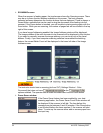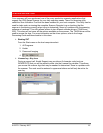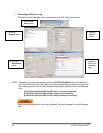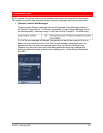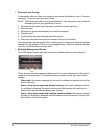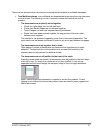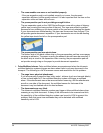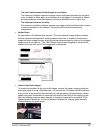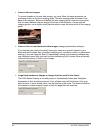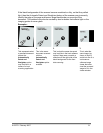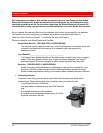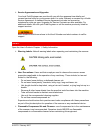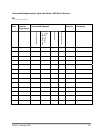
28 A-61579 February 2007
- The consumables are worn or not installed properly.
If the pre-separation pad is not installed correctly or is worn, the document
separation efficiency will be greatly reduced. It is also important that the tires on the
separation roller are clean and not worn.
- The pre-separation pad is not providing enough friction.
The pre-separation pads on the i1800 Series Scanner come with a piece of slippery
yellow tape covering the lower portion of the pad. This tape was added to prevent
documents from stubbing on the lower portion of the pad and not entering the feeder.
If your documents are double-feeding, this tape can be removed from the pad. This
will provide greater document separation. If your documents are not double-feeding
the yellow tape should be left on the pre-separation pad.
- The pre-separation pad was stuck down.
The bottom side of the black rubber strip on the pre-separation pad has a wax paper
covering an adhesive. The paper covering the adhesive should never be removed. If
the black strip is stuck to the separation roller covering, the pre-separation pad will
not provide enough drag on the paper to provide document separation.
¾False Multifeed alarms: False multifeed alarms are experienced when the ultrasonic
multifeed detection systems triggers an alarm when there is only one document in the
transport. The following is a list of common causes and resolutions for this problem:
- The page has a physical attachment.
If you are scanning a page that has ‘sticky notes’, stickers (such as a barcode labels)
or has a check taped to it, the multifeed detection system will trigger a multifeed
alarm. If the attachments cannot be removed before scanning, and the attachments
are all on one side of the document, the multifeed sensor for that area of the
document may be disabled within the host software.
- The documents are very thick.
The ultrasonic multifeed detection system may trigger a false multifeed alarm when
scanning a very thick document. If many of the documents to be scanned are thick,
the sensitivity of the multifeed detection system can be set to LOW to prevent this
problem. Note that some true multifeeds may not be detected with multifeed
sensitivity set to LOW.



